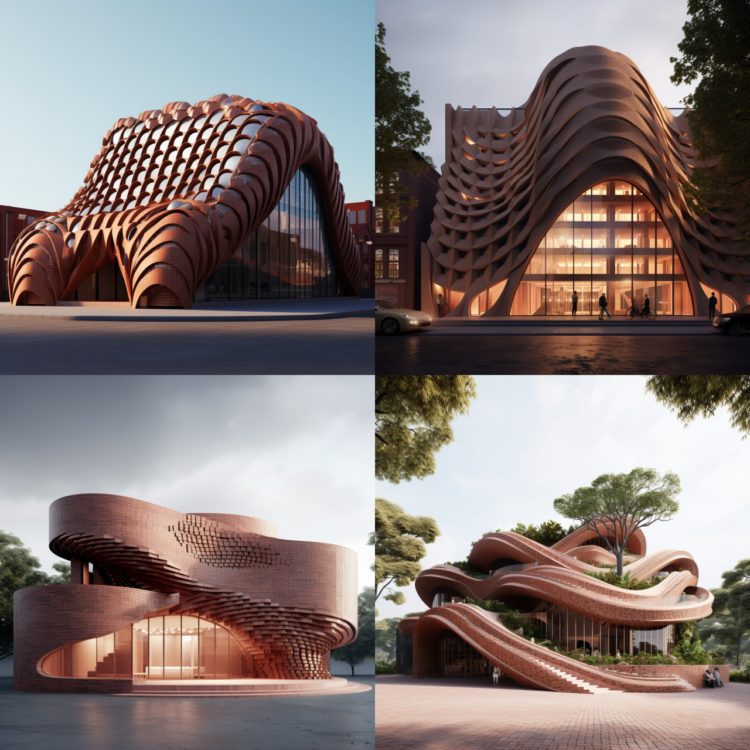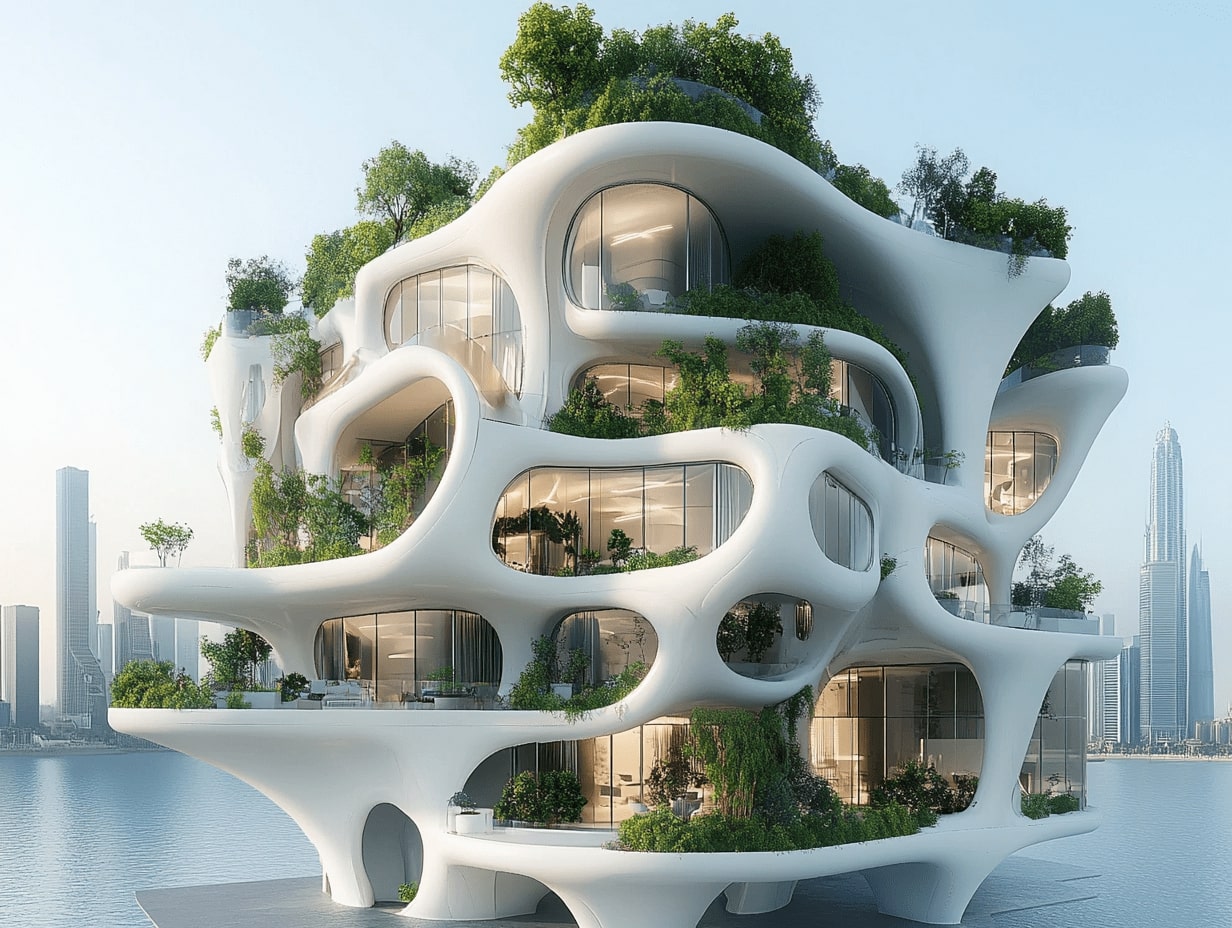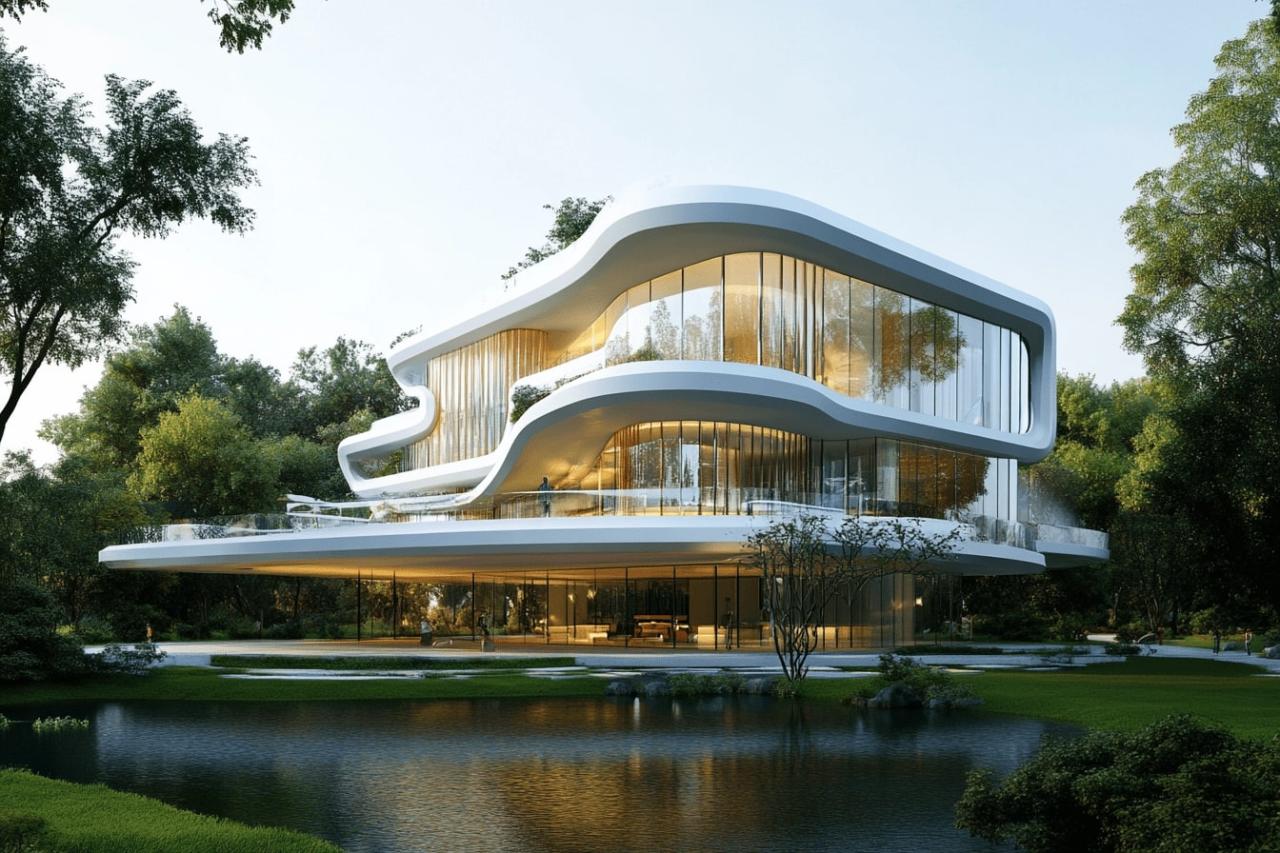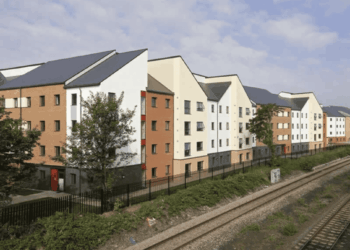Artificial Intelligence (AI) is reshaping industries across the globe, and the field of architecture is no exception. In recent years, AI has emerged as a transformative force that not only enhances design efficiency but also redefines how architects conceptualize and realize their projects. This extensive exploration provides an in-depth look at how AI integration is revolutionizing modern architectural practices. We will examine the evolution of technology in architecture, highlight leading-edge AI applications, discuss real-life case studies, and consider the future trajectory of this dynamic field.
The Convergence of AI and Architecture
The architectural profession has always embraced new technologies, from the use of advanced drafting tools to 3D printing and Building Information Modeling (BIM). Today, AI stands at the forefront of this technological revolution, enabling unprecedented levels of creativity, precision, and sustainability. AI’s integration into architecture is not merely about automating tasks; it is about augmenting human intelligence, fostering innovation, and creating built environments that are responsive to the needs of their occupants.
For centuries, architects have faced the challenge of balancing form, function, and aesthetics. With AI, this balance is increasingly maintained through intelligent algorithms that offer data-driven insights, predictive analyses, and optimization strategies. This convergence of art and technology is paving the way for structures that are not only visually striking but also environmentally and economically sustainable.
Historical Background: From Hand Drafting to AI-Driven Design
The evolution of architectural practices has been marked by several pivotal moments. In the past, architects relied heavily on hand-drawn sketches and manual calculations. The introduction of computer-aided design (CAD) transformed the field by improving accuracy and streamlining workflows. However, these digital tools still depended on human input and decision-making.
The advent of AI has taken these capabilities a step further by incorporating machine learning algorithms, neural networks, and data analytics to automate and refine complex processes. Some of the milestones in this journey include:
A. Early Computer-Aided Design:
The transition from manual drawing to CAD in the 1980s, which revolutionized precision in design.
Enhanced visualization techniques and simulation tools that allowed architects to experiment with various design scenarios.
B. Building Information Modeling (BIM):
The integration of BIM in the 2000s provided a platform for collaborative design and real-time data sharing.
BIM laid the groundwork for more integrated systems that could incorporate AI to manage and optimize building performance.
C. Emergence of AI Technologies:
The last decade has seen the development of AI algorithms designed specifically for design optimization, structural analysis, and even predicting future building behaviors based on climatic data.
AI tools now support complex computations that were once unimaginable with traditional methods.
The historical narrative underscores the fundamental shift from a primarily human-centered process to one that is increasingly collaborative with intelligent systems. Today’s architects are leveraging these advancements to push the boundaries of what is achievable in design and construction.
Key Areas of AI Integration in Architecture
The application of AI in architecture spans a broad spectrum of processes—from the early design stages to the post-occupancy performance analysis of buildings. Below are some of the critical areas where AI is making a significant impact:
1. Conceptual Design and Generative Algorithms
One of the most revolutionary impacts of AI in architecture is its ability to generate design alternatives. Generative design software harnesses the power of AI to explore countless configurations that adhere to predefined parameters such as spatial requirements, environmental conditions, and aesthetic criteria. Architects input core design goals and let the software propose multiple solutions, often uncovering innovative ideas that might not have been conceived manually.
Advantages of Generative Design:
Speed: Quickly generates a multitude of design variations.
Creativity: Stimulates innovative solutions by exploring non-traditional forms.
Optimization: Balances structural integrity, material efficiency, and cost-effectiveness.
By using AI in the conceptual phase, architects can push creative boundaries and explore design possibilities beyond human limitations.
2. Structural Analysis and Simulation
Structural integrity is the backbone of any architectural project. AI facilitates comprehensive structural analysis by simulating various stress factors, load distributions, and environmental effects. Advanced simulation models powered by AI can predict how a structure will behave under different conditions, allowing architects and engineers to optimize materials and design for maximum safety and durability.
Key Benefits:
Accuracy: Enhanced precision in predicting structural performance.
Risk Mitigation: Identifies potential failure points before construction begins.
Resource Optimization: Minimizes material waste through precise calculations.
3. Energy Efficiency and Sustainability
Sustainability is a central tenet of modern architecture. AI contributes significantly to energy modeling and sustainability planning by analyzing data from historical climate patterns, local environmental conditions, and building performance metrics. This information is crucial for designing energy-efficient systems, optimizing natural lighting, and reducing the overall carbon footprint of a project.
Sustainable Design Initiatives:
Energy Modeling: Simulates energy consumption under various scenarios.
Environmental Monitoring: Uses real-time data to adjust building systems dynamically.
Green Materials: Recommends eco-friendly materials based on performance data.
4. Smart Building Systems
The concept of the smart building integrates AI-powered sensors, Internet of Things (IoT) devices, and automated control systems to create responsive environments. These systems not only enhance occupant comfort but also improve operational efficiency. AI algorithms analyze data from sensors to optimize HVAC systems, lighting, and security, making buildings more adaptive and intuitive.
Components of Smart Building Systems:
Sensor Networks: Continuously collect data on environmental conditions.
Automated Controls: Adjust systems in real time based on occupancy and external factors.
Predictive Maintenance: Anticipate issues before they escalate, reducing downtime.
5. Project Management and Workflow Automation
Efficient project management is vital to the success of architectural projects. AI tools streamline project workflows by automating scheduling, resource allocation, and even risk assessment. Through intelligent project management software, teams can monitor progress in real time and adjust plans to mitigate delays or cost overruns.
Automation Benefits:
Real-Time Updates: Instantaneous tracking of project milestones.
Risk Analysis: Automated identification of potential obstacles.
Resource Optimization: Ensures timely allocation of labor and materials.
Real-Life Case Studies: AI in Action
To illustrate the transformative impact of AI on modern architecture, let’s examine a few real-life case studies where AI integration has driven significant improvements in design, construction, and building performance.
Case Study 1: The Smart Eco-Tower
A multinational architecture firm embarked on a project to design an eco-tower in a bustling urban center. The goal was to create a high-rise structure that minimized energy consumption while maximizing occupant comfort. By leveraging AI-driven generative design tools, the team explored thousands of design alternatives that balanced aesthetics with sustainability. AI-powered simulation software then modeled the tower’s energy performance, leading to the implementation of smart windows and adaptive shading systems.
Project Outcomes:
A reduction in energy consumption by over 30%.
Increased occupant satisfaction due to improved natural lighting and thermal comfort.
Enhanced structural integrity without compromising the design’s visual appeal.
Case Study 2: Revolutionizing Public Infrastructure
In another instance, a city government partnered with technology firms to reinvent public infrastructure using AI. The project involved upgrading a historic municipal building to incorporate smart systems while preserving its cultural heritage. AI-enabled sensors and automated systems were installed, allowing the building to regulate its internal conditions based on real-time data. This not only improved energy efficiency but also reduced long-term maintenance costs.
Key Innovations:
Integration of AI-controlled climate systems within a heritage structure.
Optimization of energy usage, with reductions up to 25%.
Preservation of historical elements through sensitive renovation techniques.
Case Study 3: Adaptive Community Centers
Community centers across a metropolitan area were redesigned using AI to better serve diverse populations. Architects used AI-driven modeling to analyze community needs, traffic patterns, and accessibility requirements. The generative design process resulted in flexible spaces that can easily adapt to changing functions—from educational facilities to recreational zones. Smart building systems integrated into these centers monitor usage patterns and adjust the internal environment to optimize comfort and utility.
Benefits Realized:
Versatile spaces that respond dynamically to community needs.
Improved energy management through AI-guided systems.
A boost in community engagement driven by innovative design solutions.
Challenges and Considerations in AI Integration
While the advantages of incorporating AI in architectural practices are substantial, the process is not without its challenges. Architects and engineers must navigate various technical, ethical, and logistical issues to fully realize the potential of AI.
A. Data Quality and Security
For AI systems to produce reliable outputs, the quality of data input is paramount. In architectural applications, data is gathered from numerous sources, including sensor networks, climate databases, and historical records. Ensuring this data is accurate, up-to-date, and secure is essential.
Key Challenges:
Data Integration: Merging data from diverse sources can lead to inconsistencies.
Security Risks: Large amounts of sensitive data can be vulnerable to cyber-attacks.
Privacy Concerns: The use of data must comply with regulations to protect individual privacy.
B. Balancing Creativity with Automation
A common concern among architects is that AI might stifle creativity by automating design processes. However, rather than replacing human ingenuity, AI serves as a tool to enhance creative decision-making. It offers multiple design solutions and optimizations that architects can refine and adapt according to their vision.
Considerations for Creative Integration:
Augmentation, Not Replacement: Use AI to complement and enhance the creative process.
Human Oversight: Maintain strict human control over final design decisions.
Iterative Collaboration: Encourage a back-and-forth dialogue between AI outputs and human creativity.
C. Technical Adoption and Skill Gaps
The rapid development of AI technologies has resulted in a learning curve for many professionals in the architectural domain. Integrating these technologies into everyday practice requires training, investment in new software, and a shift in conventional workflows.
Strategies to Bridge the Gap:
Training Programs: Establish continuous learning modules to keep teams updated.
Collaborative Partnerships: Work with technology firms to integrate cutting-edge tools.
Pilot Projects: Start with small, manageable projects to test and refine AI applications.
D. Economic and Regulatory Factors
The adoption of AI in architecture is influenced by broader economic and regulatory landscapes. While the promise of efficiency and cost savings is significant, firms must also contend with initial investment costs and evolving regulations that govern the use of technology in construction and design.
Economic Considerations:
Investment vs. ROI: Balancing the upfront costs of AI integration with the long-term benefits.
Regulatory Compliance: Adapting designs to meet updated building codes and technological standards.
Market Readiness: Assessing the industry’s overall preparedness for disruptive innovations.
The Future of AI in Architectural Practices
As AI continues to mature, its role in architecture is poised to expand exponentially. Future developments may include more intuitive design software that learns from architects’ preferences, deeper integration with augmented reality (AR) for immersive walkthroughs, and even real-time adaptation of building systems in response to environmental changes.
A. Advancements in Machine Learning Algorithms
Machine learning is at the heart of AI. With ongoing advancements, algorithms will become more sophisticated, enabling even more nuanced and context-aware design decisions. Future AI tools might be capable of understanding the subtle interplay between light, space, and material in ways that closely mimic human perception.
B. Integration with Virtual and Augmented Reality
By merging AI with virtual and augmented reality, architects will be able to experience their designs in immersive environments before they are built. This combination will enable real-time modifications and collaborative feedback, thus reducing post-construction modifications and optimizing user satisfaction.
C. Real-Time Adaptive Systems
Imagine a building that learns from its occupants and adjusts its environment accordingly. Through continuous monitoring and AI-based predictive analytics, smart buildings of the future could automatically modify their internal conditions—adjusting temperature, lighting, and ventilation—in real time for maximum comfort and energy efficiency.
D. Sustainability and Resilience
The global emphasis on sustainability will drive AI innovations aimed at creating resilient and adaptive infrastructure. By combining predictive analytics with real-time environmental data, architects can design buildings that are better equipped to withstand extreme weather conditions while minimizing their ecological footprint.
Future Sustainability Initiatives:
Dynamic Energy Optimization: Buildings that continuously adjust energy usage in response to external factors.
Material Innovation: AI-guided selection of new, more sustainable building materials.
Urban Resilience: Models that integrate urban planning with ecological preservation strategies.
Practical Implementation: Steps for Successful AI Adoption in Architecture
For firms looking to integrate AI into their practices, a strategic approach is critical. The following step-by-step guide outlines how architectural practices can successfully adopt AI technologies:
A. Assess Organizational Readiness:
Evaluate current workflows, technical infrastructure, and team skills to determine the organization’s starting point for AI integration.
B. Define Clear Objectives:
Identify the areas that could benefit most from AI, such as design optimization, energy modeling, or project management, and set measurable goals.
C. Invest in Training and Talent:
Enhance the team’s proficiency with targeted training programs and consider hiring AI specialists to drive the implementation process.
D. Choose the Right Tools and Partners:
Research and invest in AI software that aligns with the firm’s objectives. Collaborate with technology partners who can provide ongoing support and updates.
E. Implement Pilot Projects:
Start with small-scale projects that serve as testing grounds for AI applications. Use these pilots to refine processes and demonstrate value.
F. Monitor and Evaluate Performance:
Continually assess the performance of AI-integrated systems. Gather data, obtain feedback from stakeholders, and make necessary adjustments.
G. Scale and Innovate:
Once pilots prove successful, scale the technology across larger projects and continually seek new ways to integrate AI in emerging areas of design and construction.
The Impact on Collaborative Work and Interdisciplinary Innovation
AI does not operate in isolation. Its full potential is realized when integrated into a broader collaborative framework involving architects, engineers, urban planners, environmental scientists, and digital artists. This interdisciplinary collaboration can lead to groundbreaking projects that not only emphasize technological prowess but also address complex social and environmental challenges.
Consider the following collaborative benefits:
A. Enhanced Communication:
AI-powered platforms facilitate real-time collaboration across different teams, ensuring that every stakeholder is aligned with the project’s goals.
B. Data-Driven Decision Making:
By providing insights grounded in data, AI helps bridge the gap between creative vision and quantitative analysis, resulting in more balanced and informed design decisions.
C. Cross-Disciplinary Synergies:
Collaborative environments foster an exchange of ideas that integrate diverse expertise, paving the way for innovative solutions that address multi-faceted problems.
D. Accelerated Innovation:
With AI handling routine tasks, creative professionals can devote more time to conceptual design and strategic thinking, thereby accelerating the pace of innovation.
Ethical Considerations and the Human Touch
While AI offers remarkable benefits, it also brings ethical challenges that must be carefully addressed. Architects face questions about data privacy, the displacement of human jobs, and the ethical implications of relying on algorithms for creative processes. Maintaining a human touch is essential in an era increasingly dominated by automation.
Human-Centered Design Philosophy:
Despite the automated capabilities of AI, human intuition, empathy, and ethical judgment remain vital. Architects must integrate AI as a tool while ensuring that the final designs reflect a human-centered approach that prioritizes well-being and community values.Transparency and Accountability:
As AI systems become more prevalent, transparency regarding their decision-making processes is key. By documenting AI-driven steps in the design process, architects can create a narrative that explains how decisions were made and justify their choices.Ethical AI Practices:
Firms should establish ethical guidelines for AI use, ensuring that data is managed responsibly and that the technology is deployed in ways that benefit society broadly.
Conclusion
AI integration in modern architectural practices marks a transformative era in design and construction. The synergy of human creativity with powerful AI tools is ushering in a new age where structures are smarter, more sustainable, and fundamentally more adaptable to the evolving needs of society. By harnessing AI’s potential, architects can push the boundaries of traditional practices, rethinking everything from design concepts to building management.
The journey of integrating AI into architecture is both exciting and challenging. With careful implementation, ethical oversight, and a commitment to collaboration, the future of architecture is set to become more dynamic and responsive than ever before. As we look ahead, the melding of art, science, and technology promises to create built environments that not only meet the functional demands of society but also enhance human experiences in profound and unexpected ways.












